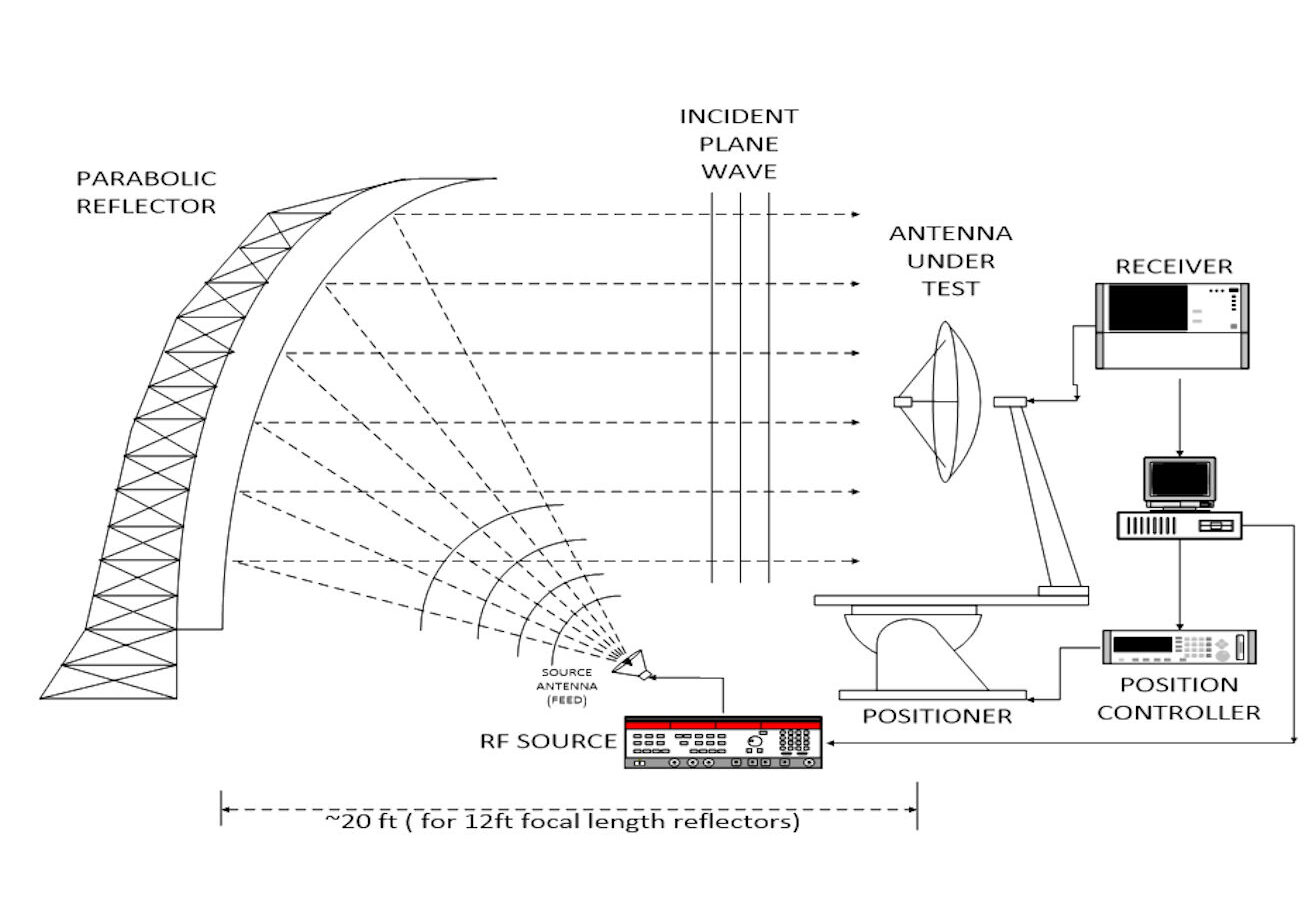WHAT IS A CATR?
A Compact Antenna Test Range (CATR) is a type of range used for antenna testing at frequencies where the far-field spacing would be impractical for traditional outdoor or free space methods.
A CATR uses one or more parabolic reflectors to collimate spherical waves of a source, or feed, antenna into planar waves within the desired test zone where the antenna under test is placed. This test zone is commonly referred to as the quiet zone (QZ).
When designing a CATR, care must be taken to ensure the radiation beam shape of the feed antenna properly illuminates the reflector to provide a quality far-field measurement. Likewise, special attention must be given to the reflector edege treatment, feed placement, absorber treatment, and overall chamber design to mitigate unwanted RF reflections from entering the QZ.


CATRs come is a variety of different configurations with design consideration given to the number of reflectors, reflector size and shape, feed antenna design and location, and focal length, just to name a few.
Despite these complexities, there are some basic "rules of thumb" that can be used to determine potential system size. The QZ needs to be able to encompass the antenna under test as it is rotated to measure its response to the incident plane wave. For a single reflector system, the QZ size and geometric optics will determine the minimum reflector size. Frequency range is also another important design parameter as it will determine not only the size of the anechoic material, but also the reflector edge treatment. All of these design parameters, in addition to desired measurement accuracy, drive the required test system volume needed to accomodate the CATR.
Due to these design requirements, testing large devices at low frequenices becomes prohibited due to cost and size constraints. However, a CATR is ideal for microwave and millimeter wave frequencies where the 2D**2/lambda far-field distance is large, such as with high-gain reflector antennas, or when real-time measurements are desired.
NPM has the knowledge expertise and analytical tools needed to provide CATR solutions for today's antenna testing challenges. NPM's family of reflectors are fabricated using the most advanced and accurate metal machining facilities, achieving typical surface accuracies of around 15 um, which is required for high frequency testing. Edge diffraction is kept to a minimum by employing carefully designed simulations, optimized for low frequency operation to minimize influence on the desired quiet zone for the test system.
Compact Antenna Test Ranges (CATR) GALLERY






